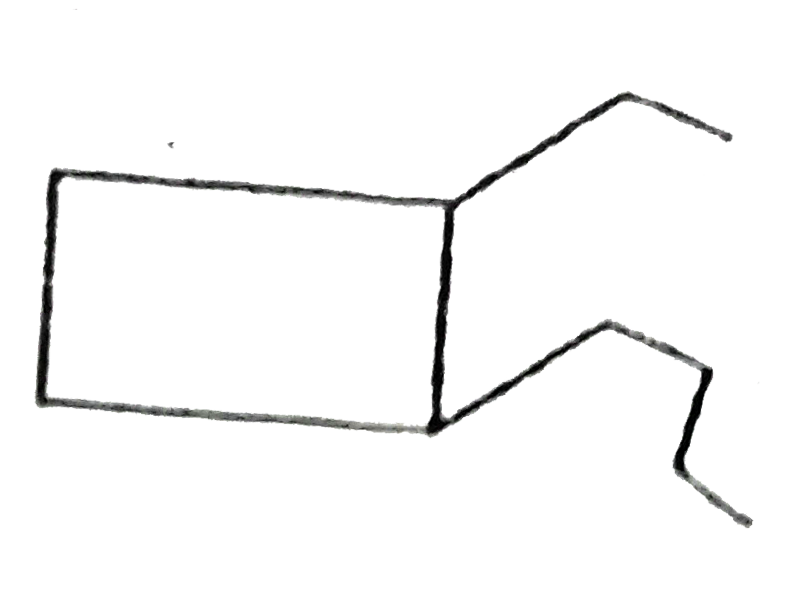Give the IUPAC name of the hydrocarbon represented by Swastik sign.
To determine the IUPAC name of the hydrocarbon represented by the Swastik sign, we can follow these steps:
1. Identify the Structure: The Swastik sign represents a specific hydrocarbon structure. It can be visualized as a combination of carbon atoms arranged in a particular way.
2. Draw the Structure: Based on the description, we can expand the Swastik sign into a structural formula. The structure can be represented as follows:
- Start with a central carbon atom and extend the arms of the Swastik to include other carbon atoms.
- The expanded structure can be represented as:
CH3|CH2−CH2−CH2|CH3
3. Count the Carbon Atoms: From the structure, we can count the number of carbon atoms in the longest continuous chain. In this case, we find:
- There are 5 carbon atoms in the longest chain.
4. Identify Substituents: Look for any substituents on the main carbon chain. In this case, we can see that there are two ethyl groups (–CH2CH3) attached to the third carbon of the main chain.
5. Number the Carbon Chain: Number the carbon atoms in the longest chain starting from one end to ensure that the substituents get the lowest possible numbers. The numbering will look like this:
12345CH3−CH2−CH−CH2−CH3|CH2CH3|CH2CH3
6. Write the Name: Based on the structure:
- The main chain has 5 carbon atoms, which corresponds to the prefix "pent".
- There are two ethyl substituents on the third carbon, which is indicated by "3,3-diethyl".
- Since all the bonds are single, we use the suffix "ane".
7. Final IUPAC Name: Combine the parts to get the final IUPAC name:
- The complete name is 3,3-Diethylpentane.
Final Answer:
3,3-Diethylpentane
- Start with a central carbon atom and extend the arms of the Swastik to include other carbon atoms.
- The expanded structure can be represented as:
CH3|CH2−CH2−CH2|CH3
- There are 5 carbon atoms in the longest chain.
12345CH3−CH2−CH−CH2−CH3|CH2CH3|CH2CH3
- The main chain has 5 carbon atoms, which corresponds to the prefix "pent".
- There are two ethyl substituents on the third carbon, which is indicated by "3,3-diethyl".
- Since all the bonds are single, we use the suffix "ane".
- The complete name is 3,3-Diethylpentane.
3,3-Diethylpentane
Similar Questions
Give its IUPAC name

View SolutionGive its IUPAC name

View SolutionGive its IUPAC name.
View SolutionGive the IUPAC names of the following:

View SolutionGive the IUPAC names of the following:

View SolutionGive the IUPAC names of the following:

View SolutionGive the IUPAC names of the following:

View SolutionGive the IUPAC names of the following:

View SolutionGive the IUPAC names of the following:

View SolutionGive the IUPAC names of the following:

View Solution
